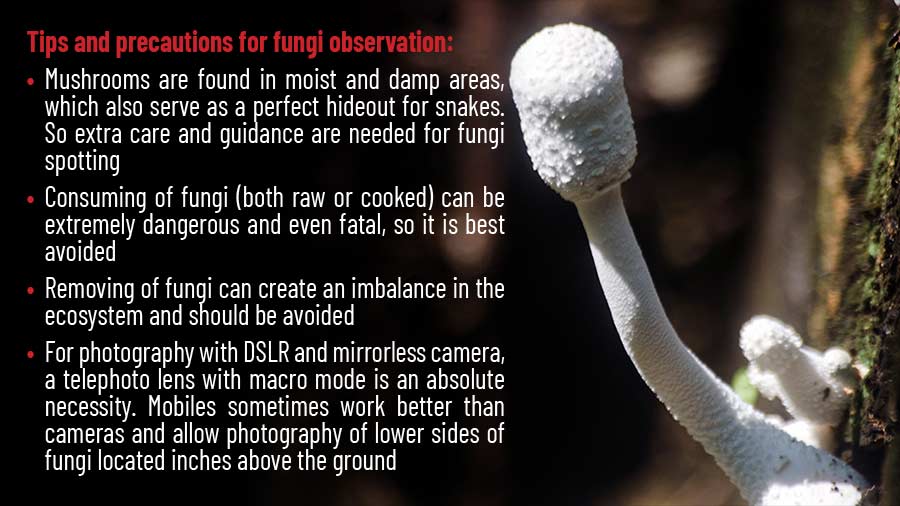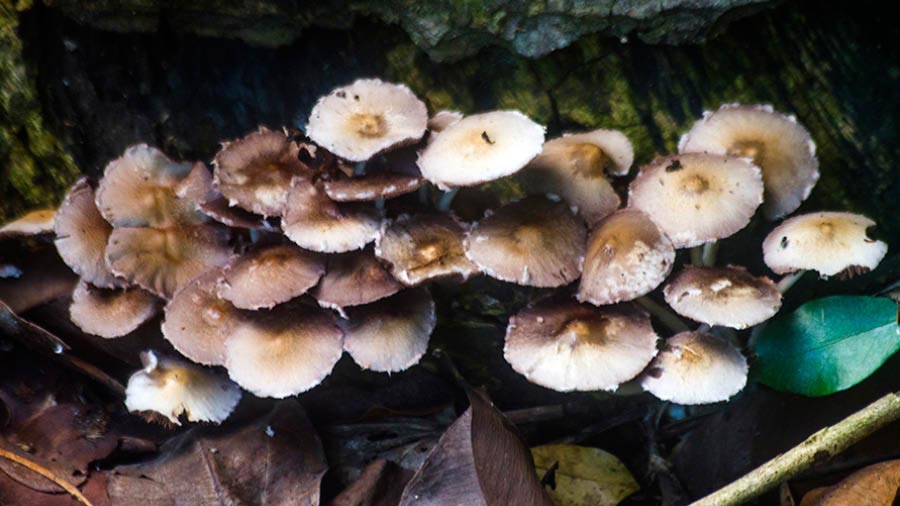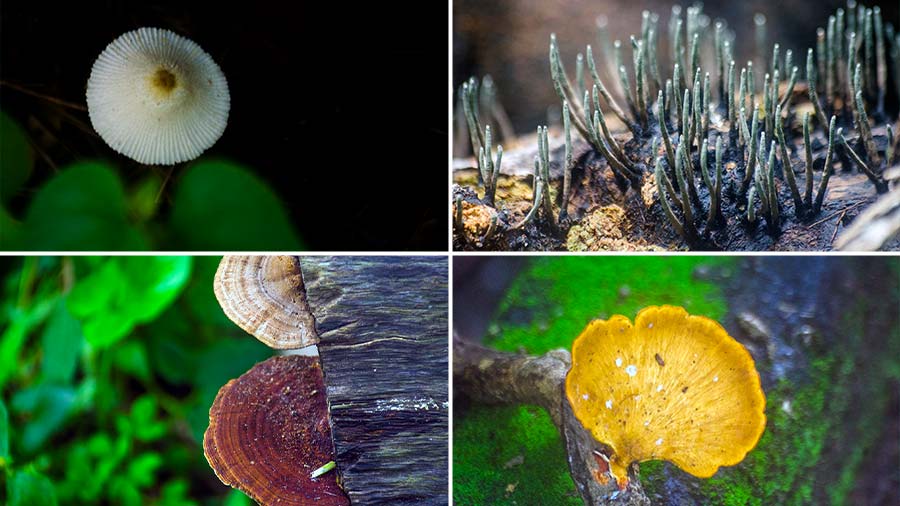Finally, the Kolkata monsoon has reached its full glory and the dead man’s fingers have started sprouting out of the dark moist ground. Strangely, this spooky event is not happening in any haunted graveyard but is taking place in south Kolkata’s morning walkers’ paradise – Rabindra Sarobar, also known as Dhakuria Lakes.
Don’t be surprised that hundreds of morning walkers walk past them every morning without even noticing them. These are no real fingers but are fungi barely an inch long and only a few millimetres thick. Only a close-up shot in macro mode will reveal the spooky feeling of a dead man’s fingers emerging out of the ground.

(Clockwise from top left): A Wine Glass Fungus, a cluster of Black Ink Cap Fungi, a cluster of Split Gill Fungus and Puff Ball Fungi
Kuntal Chaudhuri, a professor of botany at Vivekananda College, says: “It’s monsoon, the time of the year when these invisible non-green creatures, plants in a wider sense, come out of their subterranean hiding with their umbrella-like, bracket-like, and even ear-like or finger-like fruit bodies that can outnumber the birds at the Lakes.”
Tirthankar Roy Chowdhury, an IT professional and nature lover, points out: “Even though the fungi appears in large numbers, they are difficult to spot. Many of them come in miniature size and only a trained eye could spot them. Dead and moist logs are the most likely place for fungi growth.”
Local resident and active birder Sudip Ghosh adds: “In recent years, the fallen tree trunks are being removed from the Lake area, this can create a void in the fungi growth and affect the overall ecosystem of the area.”

Kuntal Chaudhuri adds: “Identifying fungi is no easy task, there are about 2.2 million to 3.8 million species under the fungi kingdom. One needs to photo document both the upper and lower parts of the fungi to identify it.”
“The words fungi and mushroom are often used synonymously but in scientific sense mushrooms are sub-sets of fungi and generally have an umbrella shape. The ones with smaller umbrella shape are referred as toadstool.”
Some popular fungi found at Rabindra Sarobar
Dead Man’s Finger: This species of fungus has several size variations and some really have the finger like size, but the ones found in Rabindra Sarobar are much smaller in size. They appear in large groups and are mostly found on rotten and decaying wood.
Bracket: This is the most abundantly found family of fungi in the Lakes. These semi-circular brackets (occasionally circular) like structures are seen to project out of dead logs and even from live tree trunks. They vary in size ranging from ₹5 coin to larger than a human palm. They also vary widely in colour and shade.
Wine Glass: Fungi are usually named after their shape. They range from spooky dead man’s finger to luxurious items like wine glass. This fungus also fund on dead logs and apart from its distinct shape has a unique blend of colours usually consisting of brown and white.
Ink cap: This is one of the few edible fungi of Rabindra Sarobar, but consuming it with alcohol can turn fatal. This has a typical mushroom shape with a white stalk and a head which is initially white but turns black with time. The thick black fluid secreted by the mushroom was once used as ink and hence the name. These are about 2 – 3 inches tall and can be found individually and in clusters.
Puff Ball: Puff Ball is a genus of fungi found usually at the base of trees. They lack the stalk and the ones found in Rabindra Sarobar usually consists of two spherical structure one above the other. The upper sphere is smaller than the lower one and along with the white colour gives it a miniature snowman look.
Split Gill: This species of fungus appears in large groups and resembles undulating waves of tightly packed corals. They range in colour from creamy yellow to pale white. Closer inspection of individual fungus reveals the shape of a pair of gills of a fish and hence the name split gills.

A colony of toadstool thriving on a trunk of a fallen tree
